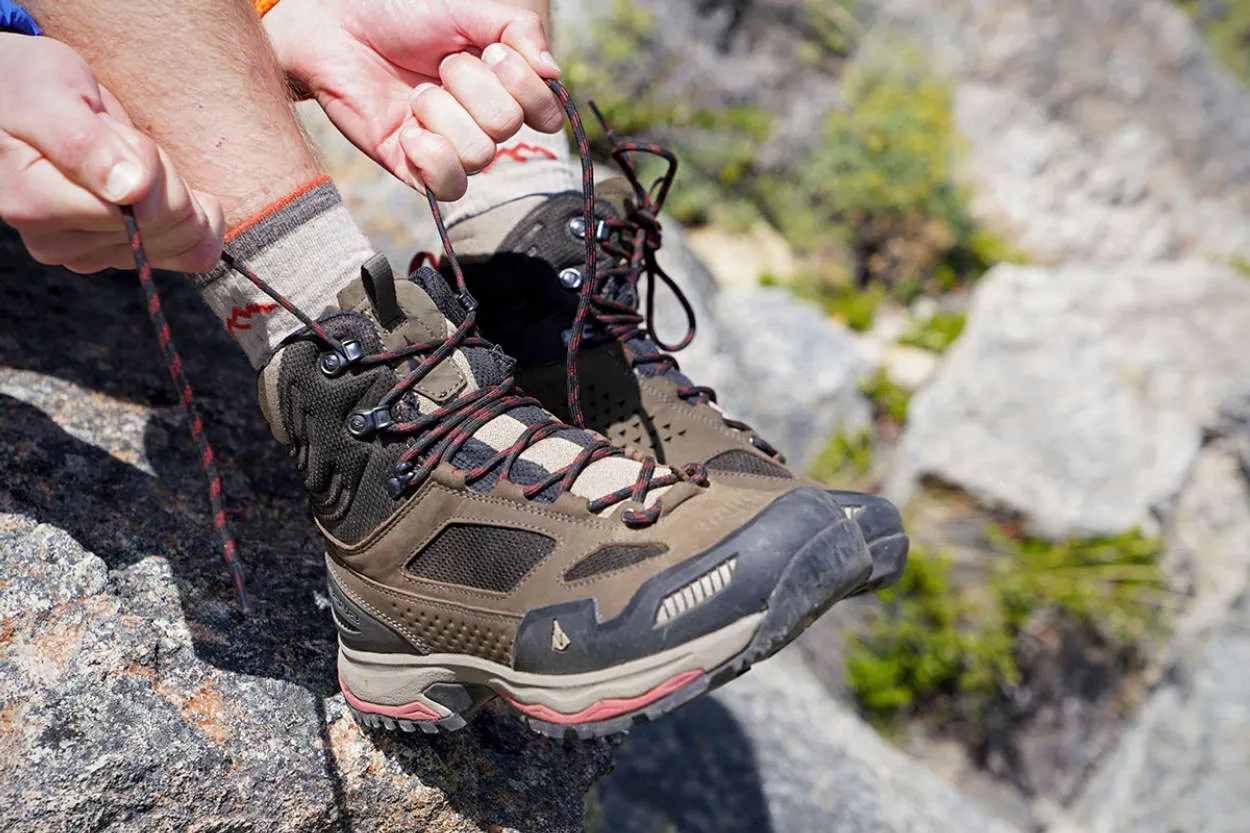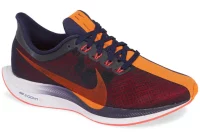Discover the latest trends and innovations in next-gen hiking footwear. From advanced materials to cutting-edge designs, the article explores how the hiking industry is revolutionizing footwear for a more comfortable and enjoyable outdoor experience. Experience the future of hiking with these exciting innovations.
The Future of Hiking Shoe Technology
In the world of hiking footwear, advancements in technology and design are constantly shaping the future. As outdoor enthusiasts continue to seek new challenges and push the boundaries of adventure, innovators within the industry are rising to the occasion by developing cutting-edge hiking shoes that offer improved performance, comfort, and durability.
One prominent trend in hiking shoe technology is the integration of eco-friendly materials and sustainable manufacturing processes. With growing concerns about the environment, shoe manufacturers are incorporating recycled and renewable materials into their designs. From uppers made using recycled plastic bottles to outsoles utilizing plant-based compounds, these innovative solutions minimize the ecological footprint without compromising on quality.
Another key aspect of the future of hiking shoe technology is enhanced cushioning and support. Brands are now focusing on creating shoes that offer superior shock absorption and stability, allowing hikers to navigate rugged terrains with ease. Through advancements in midsole technology and the use of specialized foams, such as EVA and TPU, hikers can experience increased comfort and reduced fatigue during long treks.
Additionally, the integration of smart features into hiking footwear is becoming more prevalent. These intelligent shoes are equipped with sensors that monitor various metrics, including step count, distance traveled, and even environmental conditions. The data collected can then be synced with smartphones or smartwatches, providing valuable insights to hikers and enabling them to optimize their hiking experience.
Moreover, the future of hiking shoe technology lies in improved traction and stability. Manufacturers are constantly experimenting with new tread patterns, rubber compounds, and multidirectional lugs to deliver superior grip on slippery surfaces and uneven terrain. This not only enhances safety but also allows hikers to explore challenging landscapes with confidence.
Lastly, customization and individualization are becoming increasingly important in hiking shoe design. Brands are now offering options for personalized fit, allowing hikers to choose from various widths and sizes. Furthermore, advancements in 3D printing technology may soon enable the creation of bespoke hiking shoes tailored to the exact specifications of an individual’s feet.
With these exciting trends and innovations in hiking shoe technology, the future looks promising for outdoor enthusiasts. As the quest for the perfect hiking shoe continues, hikers can look forward to an era of footwear that combines performance, sustainability, and advanced features to elevate their outdoor experiences.
Eco-Friendly and Sustainable Hiking Footwear
As hiking grows in popularity, so does the demand for hiking footwear that is not only durable and comfortable but also eco-friendly and sustainable. Manufacturers are recognizing this trend and are constantly innovating to offer hiking footwear that satisfies both outdoor enthusiasts and environmentally conscious individuals.
1. Recycled Materials
One of the key trends in sustainable hiking footwear is the use of recycled materials. Manufacturers are increasingly incorporating recycled materials into the production of hiking boots and shoes. This includes recycled plastics, rubber, and even recycled textiles derived from items like plastic bottles or old clothing. By utilizing these materials, companies are able to reduce waste and minimize the environmental impact of their products.
2. Biodegradable Components
In addition to using recycled materials, hiking footwear brands are focusing on using biodegradable components. Traditional hiking boots and shoes often contain elements, such as foam or adhesives, that are not biodegradable and can harm the environment. However, by replacing these components with eco-friendly alternatives, companies are ensuring that when the footwear eventually reaches the end of its life cycle, it won’t leave a lasting negative impact on the planet.
3. Sustainable Production Processes
Sustainable hiking footwear goes beyond the materials used; it also considers the manufacturing processes involved. Companies are investing in more sustainable production techniques like water-saving technologies, energy-efficient manufacturing, and reduced chemical usage. By adopting these practices, manufacturers are minimizing their carbon footprint and contributing to a greener future.
4. Fair Trade and Ethical Practices
Consumers are increasingly concerned about the ethical and social aspects of the products they purchase. Hiking footwear brands are recognizing this and are ensuring fair trade practices and ethical sourcing of materials. Companies are making efforts to partner with suppliers who treat their workers fairly, provide safe working conditions, and use sustainable farming or harvesting methods to obtain materials.
In conclusion, the hiking footwear industry is witnessing a shift towards eco-friendly and sustainable products. With the use of recycled materials, biodegradable components, sustainable production processes, and fair trade practices, manufacturers are meeting the demands of environmentally conscious hikers. This trend is a positive step forward, ensuring that outdoor enthusiasts can explore nature while minimizing their impact on the environment.
Comparing High-Tech Hiking Boots
In the world of hiking footwear, the next generation of boots is redefining comfort, performance, and durability. With advancements in technology and innovative materials, high-tech hiking boots are becoming the go-to choice for outdoor enthusiasts. Let’s explore the latest trends and innovations in this exciting field.
1. Lightweight Design
Gone are the days of heavy, clunky hiking boots. The new breed of high-tech boots prioritizes lightweight designs without compromising on durability. They utilize cutting-edge materials such as carbon fiber, Kevlar, and synthetic fabrics to create footwear that feels feather-light on your feet.
2. Enhanced Breathability
Traditional hiking boots often lack breathability, leading to sweaty and uncomfortable feet. However, the latest models feature advanced ventilation systems, mesh panels, and moisture-wicking technologies. These innovations promote air circulation and prevent overheating, keeping your feet fresh and dry throughout your hiking adventures.
3. Waterproof Performance
One of the most crucial aspects of hiking footwear is its ability to withstand wet and unpredictable conditions. High-tech hiking boots come equipped with waterproof membranes like Gore-Tex, enabling them to offer superior protection against rain, snow, and puddles. You can now venture into any terrain with confidence, knowing that your feet will stay dry.
4. Advanced Traction
Slippery trails and challenging terrains require sturdy grip and traction. The latest hiking boots feature innovative outsoles constructed with high-quality rubber compounds and specialized lug patterns. These designs provide excellent traction on various surfaces, including wet rocks, muddy inclines, and loose gravel.
5. Customized Fit
No two feet are the same, and high-tech hiking boots acknowledge this fact. Many brands now offer customizable fit options, allowing you to adjust the boot’s tightness, arch support, and overall fit to match your foot shape and preferences. With a personalized fit, you can hike comfortably for extended periods without discomfort or blisters.
As hiking continues to gain popularity, the demand for high-tech hiking boots that combine performance, comfort, and durability is on the rise. By investing in these innovative boots, outdoor enthusiasts can embark on adventures with confidence, knowing they have the best gear to support their journey.
The Rise of Lightweight Hiking Shoes
As outdoor enthusiasts seek to enhance their hiking experience, the demand for next-generation hiking footwear has witnessed a significant shift. Among the latest trends and innovations, lightweight hiking shoes have gained tremendous popularity.
Traditional hiking boots, known for their heavy construction and sturdy support, are gradually being replaced by lightweight hiking shoes. Designed with durability and comfort in mind, these shoes offer hikers the ultimate combination of protection, agility, and breathability.
One key advantage of lightweight hiking shoes is their reduced weight compared to traditional boots. This feature contributes to greater freedom of movement, enabling hikers to navigate challenging terrains with ease. The use of advanced materials, such as synthetic fabrics and lightweight components, ensures the shoes remain comfortable for long hours on the trail.
In addition to weight reduction, innovative designs in lightweight hiking shoes provide enhanced agility and flexibility. These shoes feature a lower cut, enabling hikers to maintain a natural stride and preventing ankle strain. The incorporation of specialized soles with advanced traction technology further enhances stability while offering excellent grip on various surfaces.
Moreover, lightweight hiking shoes offer superior breathability. With the inclusion of moisture-wicking materials and breathable membranes, these shoes keep feet dry and prevent discomfort caused by sweaty conditions. The improved ventilation helps prevent blisters and reduces the risk of fungal infections during long hikes.
Given these advantages, it comes as no surprise that lightweight hiking shoes have become the go-to choice for modern adventurers. Whether embarking on a day hike or an extended backpacking journey, lightweight hiking shoes provide the necessary versatility and comfort while maintaining durability.
Looking ahead, the trend towards lightweight hiking shoes is expected to continue, with continued innovations in design and materials. Manufacturers are increasingly focusing on creating shoes that strike the perfect balance between lightweight construction and essential performance features, catering to the evolving needs of outdoor enthusiasts around the globe.
Hiking Footwear for All Terrains
When it comes to hiking, having the right footwear is essential for a comfortable and safe experience. As outdoor enthusiasts become more adventurous, it becomes crucial for hiking footwear to keep up with their needs. The next generation of hiking footwear is designed to tackle all terrains and provide unparalleled support and protection.
Lightweight and Durable Materials
One of the prominent trends in hiking footwear is the use of lightweight and durable materials. Manufacturers are incorporating advanced technologies to create footwear that is sturdy enough to withstand rough terrains while being lightweight enough to prevent fatigue during long hikes.
Waterproof and Breathable
Hiking often involves encounters with wet and muddy conditions. Therefore, the next-gen hiking footwear is equipped with waterproof features to keep your feet dry and comfortable. These innovative shoes also come with breathable membranes that prevent sweat build-up, allowing your feet to stay cool and dry in various climate conditions.
Enhanced Traction and Stability
Dealing with uneven surfaces and slippery trails is a common challenge for hikers. To overcome this, hiking footwear now incorporates advanced rubber outsoles with improved tread patterns. These provide exceptional traction and stability, reducing the risk of slips and falls even on the most challenging terrains.
Customized Fit and Support
Every hiker has unique feet, and finding the perfect fit can greatly impact comfort and performance. Leading brands are utilizing advanced technologies like 3D foot mapping and customizable insoles to provide a personalized fit. This ensures excellent support, reducing the chances of blisters and foot fatigue on long hikes.
Protection Against Impact
Another significant innovation in hiking footwear is the integration of impact protection features. Next-gen hiking shoes often include cushioning systems such as shock-absorbing midsoles and reinforced toe caps. These elements provide superior protection against rocks, roots, and other potential hazards, preventing injuries during hikes.
In conclusion, the next generation of hiking footwear brings together cutting-edge technologies and innovative designs to provide hikers with superior performance, comfort, and protection on any terrain. When choosing your hiking footwear, consider these trends and innovations to enhance your outdoor adventures.
Conclusion
Next-gen hiking footwear is revolutionizing the way we explore the great outdoors. With innovative materials and technologies, hiking shoes are becoming lighter, more durable, and more comfortable than ever before. From waterproof membranes to advanced traction systems, these advancements are ensuring that hikers can enjoy their adventures with enhanced safety and performance. As the industry continues to evolve, we can expect even more exciting trends and innovations to enhance our hiking experiences.




